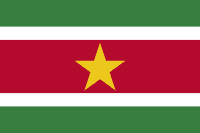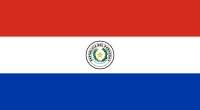 Welcome to the definitive directory of insurance providers in Peru. This guide is designed to help you quickly identify and learn about the leading local and international insurers, brokers, and public health entities. By clicking on a company’s logo, you can access detailed information to help you find the most advantageous coverage for your needs.
Welcome to the definitive directory of insurance providers in Peru. This guide is designed to help you quickly identify and learn about the leading local and international insurers, brokers, and public health entities. By clicking on a company’s logo, you can access detailed information to help you find the most advantageous coverage for your needs.
Top Peruvian Insurers
This section features the largest and most prominent insurance companies headquartered in Peru, offering a wide range of personal and commercial policies.
- All
- General & life providers
- Global Specialty Risks
- Insurance Brokers & Risk Advisors
- Other Financial Institutions (Banks)
- Other Financial Institutions (Motoring Clubs)
- Government Schemes & Entities
Insurance Company Directory & Contact Information
For your convenience, here is an updated list of the names and contact information of insurance companies and key financial institutions based in Peru.
| Interseguro Av. Javier Prado Este 492 - Oficina 2601. Teléfonos: 6114700 6114720 Rimac Seguros Calle LAS BEGONIAS 475. Teléfonos: 4113000 Cesce Perú Av. Victor A Belaunde 147 - Oficina 601. Phone: 5137200 La Positiva Calle Los Castaños 462. Teléfono: 2642460; 2641877 Mapfre Peru Av. 28 DE JULIO 873, Miraflores, Lima, Phone: 2137373 / 2139148 Pacifico Seguros Av. Juan de Arona 830. Teléfono:3132000 La Positiva Vida Calle Los Castaños 462. Teléfono: 2183015 2641877 BNP PARIBAS CARDIF Av. Canaval y Moreyra 380, Lima, Tel: 6151721 PROTECTA Av. Domingor Orue 165 - Oficina 8, Surquillo, Lima, Tel: 3913030 / 3913030 INSUR Av. Felipe Pardo y Aliaga 699 - Oficina 302. Tel: 6164141 From Superintendencia de Banca y Seguros | CHUBB PERÚ Calle AMADOR MERINO REYNA 267 - Oficina 402. Tel: 4175000 / 2213313 Mapfre Peru Vida Av. 28 DE JULIO 873. Phone: 2137373 / 2139148 Vida Camara Av. Republica de Panama 3418 - Oficina 601, San Isidro, Lima, Teléfono: 6042020 HDI SEGUROS S.A Calle Coronel Andres Reyes 420 - Oficina 601 A, San Isidro, Lima, Teléfono: 2303030 /4372928 CRECER SEGUROS S.A. Av. LA FLORESTA 497, Lima, Lima, Teléfono: 3727373 Ohio National Vida Calle Las Camelias 256 - Oficina 401, San Isidro, Lima, Teléfono: 2042330 / 2042357 COFACE Calle 41 840 CORPAC 1 - Oficina 1. Phone: 6163434 AVLA PERU Av. Victor Andres Belaunde 147 - Oficina T1,P8, San Isidro, Lima, 6163434 / 7154400 LIBERTY SEGUROS Av. Rivera Navarrete 495 - Oficina 1302, Lima, Telefono: 3213451 |
|---|
Health in Peru: Navigating Your Insurance Options
The Peruvian healthcare system is a mix of public and private services. While public providers like EsSalud and SIS offer fundamental coverage, many individuals and families choose private insurance for quicker access and more specialized care.
Understanding the options is the first step. This list of insurance logos serves as a visual guide to the major private health insurance providers. You can easily click on a logo to get a better sense of each company’s offerings and determine if they align with your healthcare needs and budget.
Peru’s Economic Context and Risk Management
Peru’s economy is dynamic, with traditional and emerging sectors coexisting with informal trades. In this environment, safeguarding personal and business assets is critical. Insurance plays a vital role in mitigating financial risks and providing stability in the face of unforeseen events.
By exploring this comprehensive list of insurance providers, you can find the right partner to protect your assets, ensuring security for your family and business in a fluctuating economy.
Explore more Insurers in the Region
© 2025 World Insurance Companies Logos and Insurers by Country













 This page provides a guide to the names and logos of the most important Colombian insurance providers. By clicking on a company’s logo, you can access up-to-date information to help you select the most advantageous coverage for your needs.
This page provides a guide to the names and logos of the most important Colombian insurance providers. By clicking on a company’s logo, you can access up-to-date information to help you select the most advantageous coverage for your needs.